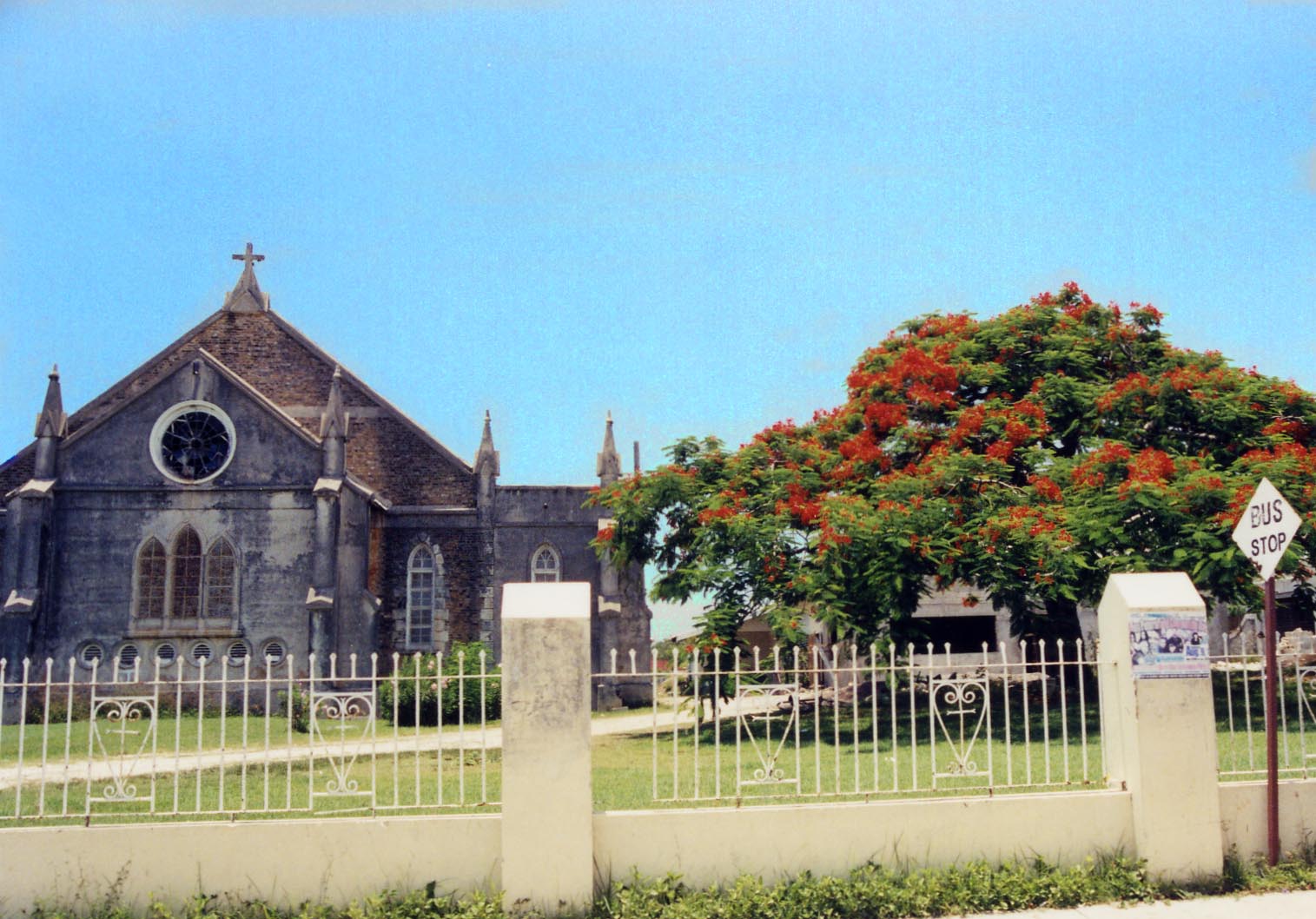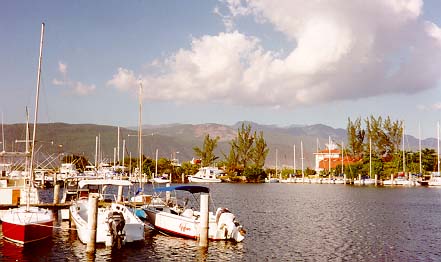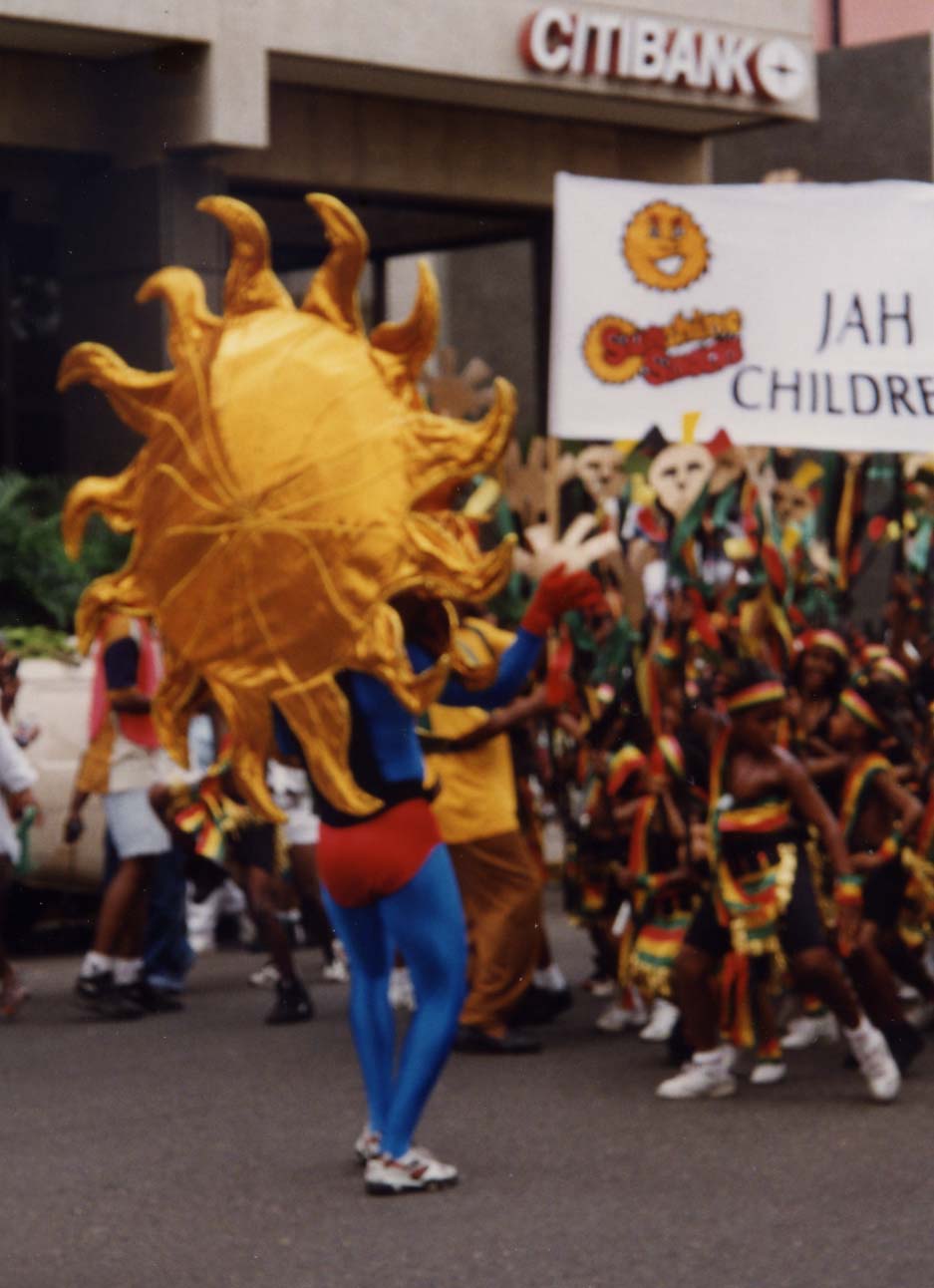
A BRIEF HISTORY OF JAMAICA

A BRIEF HISTORY OF JAMAICA
"A flame of the forest…come upon unexpectedly around a bend in the road startles like a shout;
 |
Methodist Church Savanna-la-mar |
They settled mainly in coastal areas near to a river where they cultivated tabaco for smoking and cassava and maize for food. They also hunted small animals and fished the shallow coastal waters for a variety of seafood. The Arawaks favored the huge cedar and cotton trees for making their dugout canoes and although most were one-man vessels, Columbus was astounded to observe one canoe measuring 96 feet long, 8 feet wide, and capable of carrying 50 men.
Five centuries of peaceful existence came to an end with Spanish colonization. The entire Arawak population of around 100,000 was wiped out within the next century by harsh labor, European diseases and sheer sport by the Spanish. It is probable that their tranquil days were already numbered because Columbus' arrival coincided with raids on the eastern coast of Puerto Rico by fierce, man-eating Caribs who had practically decimated the Arawak communities of the Eastern Caribbean.
During the 16th century, Spain's Caribbean colonies, especially Hispanola and Cuba, were important for securing the shipping routes between Spain and the wealthy Americas. Jamaica was of little consequence and served mainly as a provisioning center for ships sailing to and from Panama. The lack of gold and the overall impoverished condition of early settlers deterred potential immigrants and the island remained poor and sparsely populated. No other European nations sought to establish their own colonies in the Caribbean during this period but their ships regularly plied these waters to plunder Spanish ships and ports.
Trade between Spain and her New World colonies began to wane in the 1620s. The elimination of native populations resulted in a labor shortage that caused mining and agricultural production to fall. At the same time, piracy increased dramatically and the cost of defending the sea routes became more burdensome to the Spanish Crown. The merchants of Seville banded together to send their ships in larger groups for greater security but this led to a longer time span between journeys. Consequently, colonists became more self sufficient and increasingly relied on smugglers for the imported goods that they needed. By 1650, high inflation, staggering war debts and plummeting treasure from the Americas all contributed to Spain's economic decline.
 |
Morgan's Harbour Port Royal |
The power struggles of 17th and 18th century Europe directly affected the distant island colonies. After an 11 year war, England reached a tentative peace with Spain under Philip of Anjou in 1713 whereby they were granted the 'Asiento,' a contract to provide Spanish colonies with African slaves for 30 years. This contract was previously held by the French and the Portuguese who had provided Spain with slaves even before Columbus made his fateful voyages. At the same time, an increase in the European demand for sugar gave rise to a prolific slave trade to meet the large labor requirements of sugar cane cultivation. Jamaica became the major center for the slave trade and dominated all the Caribbean in sugar production. Replacing gold and silver as the primary source of wealth, the 'sugar colonies' commanded the highest real estate values in the world and the wealth of the West Indian planter became legendary.
 |
Carnival Kingston |
Problems persist in Jamaica but they have not quashed the 'can do' and hopeful spirit of Jamaicans. This spirit is best noted in the ability of a small island to produce music giants such as Bob Marley of reggae fame, world class athletes like Merlene Ottey and Linford Christie as well as popular marine nature artist, Guy Harvey. It is the very same spirit encountered in the multitude of higglers, especially in tourist areas, who fend for themselves in the absence of generous social welfare benefits that are available in wealthier countries. Jamaicans are a proud and straightforward people and it is understanding this that one becomes open to the real adventure of the island. Today's adventurers, like Columbus, seek enchantment in spectacular scenery from quiet mountain tops. Others, like Henry Morgan, the buccaneer and Calico Jack, the pirate, favor sea-going adventures and the boisterous merry-making of an exuberant land while those like Cudjoe, the Ashanti leader of runaway slaves, prefer to explore the rugged landscape with its forgotten pathways. Regardless of inclination, Jamaica invites exploration, discovery and fun.

Adventures Great and Small © copyright 1996-2005